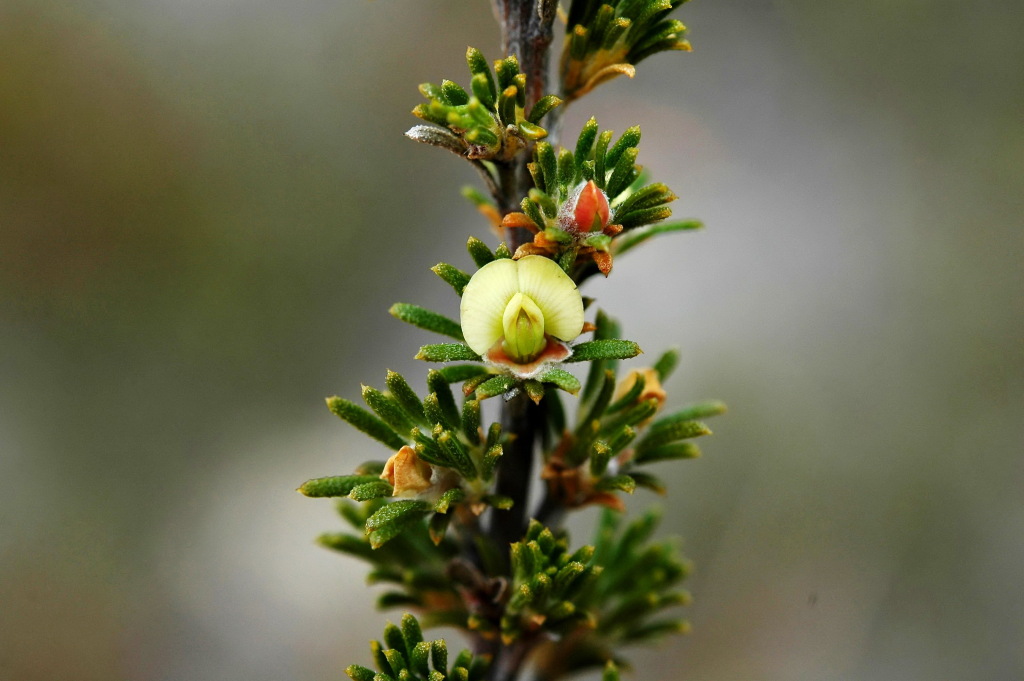Phyllota
Prostrate to erect perennial subshrubs. Leaves alternate or scattered, simple, linear, margins revolute, base decurrent; stipules minute or absent (at least in Victoria). Flowers solitary or paired, axillary or crowded towards ends of branches; bracts leaf-like; bracteoles often leaf-like, inserted below base of calyx. Calyx 5-toothed, teeth unequal, upper 2 broader than lower 3 and connate higher up, sometimes united into a lip; petals clawed, yellow, orange or yellow and red; standard ovate to orbicular or rhombic; wings oblong; keel shortest, much incurved; stamens more or less free, mostly adnate to base of petals; ovary sessile, pubescent, style incurved and subulate above, dilated or thickened below, stigma small, terminal, ovules 2, on short funicles. Pod ovoid, turgid, usually enclosed in persistent calyx, nearly sessile; seeds 1 or 2, ovate or reniform, exarillate.
About 10 species, all endemic to Australia.
Jeanes, J.A. (1996). Fabaceae. In: Walsh, N.G.; Entwisle, T.J., Flora of Victoria Vol. 3, Dicotyledons Winteraceae to Myrtaceae, pp. 663–829. Inkata Press, Melbourne.
 Spinning
Spinning

